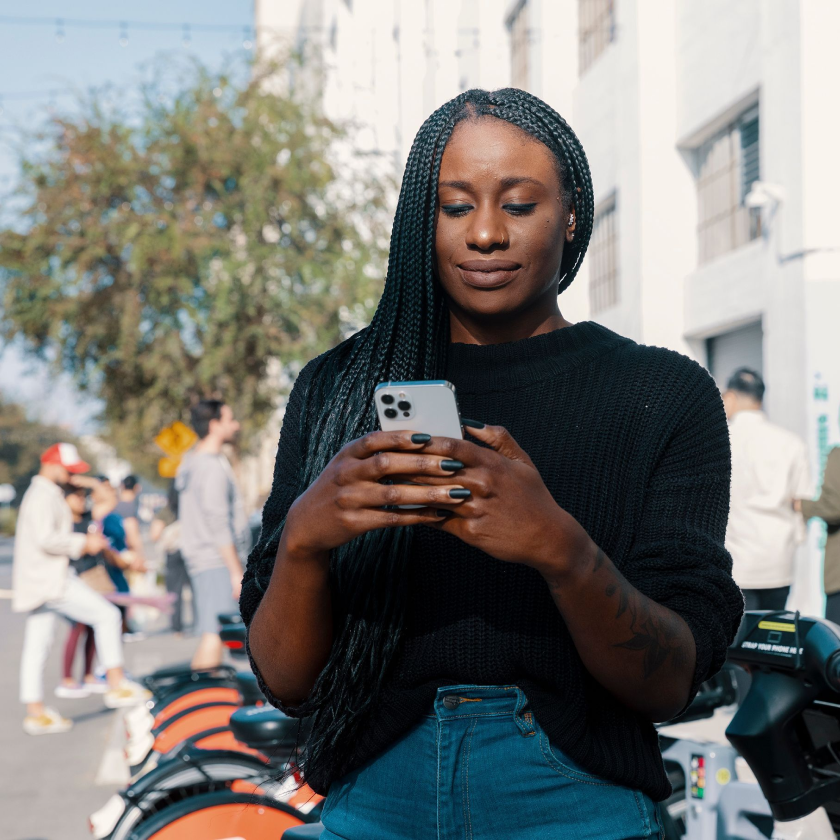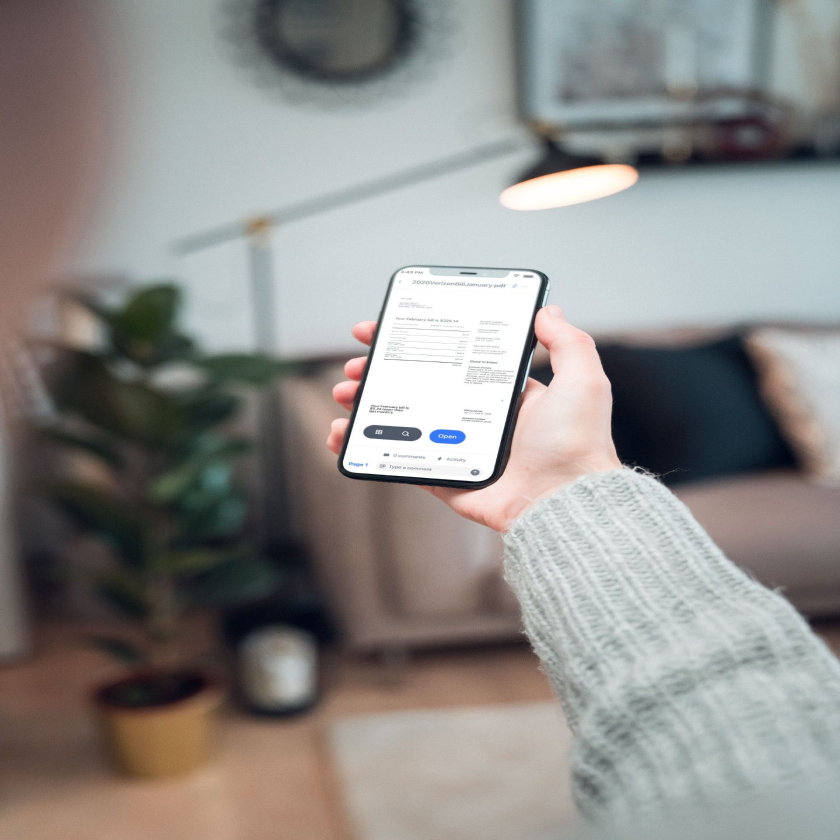Perkara yang perlu dilakukan jika telefon anda dicuri: Langkah-langkah penting untuk diambil
Kehilangan telefon anda—atau dicuri—boleh berasa seperti mimpi ngeri. Kenalan, mesej, foto dan data peribadi anda secara tiba-tiba berisiko. Tetapi bertindak dengan cepat boleh meningkatkan peluang anda untuk pulih dan melindungi maklumat anda daripada kecurian.
Senario terbaik tentunya anda dapat menemukan telefon anda—tetapi dalam senario yang paling teruk, anda masih boleh memulihkan fail anda pada peranti baharu dengan akaun Dropbox anda atau sandaran telefon terkini anda. Jadi, kekal tenang dan ikut sahaja pelan ringkas kami.
Panduan ini membimbing anda melalui cara melaporkan telefon yang dicuri, menjejakinya dan melindungi data anda supaya anda boleh mendapatkan semula kawalan ke atas akaun dan peranti anda.
Perkara yang perlu dilakukan sejurus selepas kehilangan telefon anda
Ikut 9 langkah ini setelah anda memeriksa semua poket, beg atau kawasan berdekatan anda—dan mula dapat rasakan yang telefon anda tidak berada di tempat yang sepatutnya:
1. Sahkan bahawa telefon anda hilang atau dicuri
Jejaki semula langkah anda dan semak lokasi biasa seperti kereta, pejabat atau rumah anda. Jika anda berada di tempat awam, hubungi perkhidmatan yang hilang dan ditemui untuk melihat sama ada seseorang menyerahkannya.
2. Periksa penjejakan jauh anda
Android mempunyai Cari Peranti Saya pada peranti lain, dan Apple mempunyai Cari iPhone Saya melalui iCloud, jadi menyemaknya pada peranti lain ialah langkah seterusnya. Jika telefon anda berdekatan, mainkan bunyi untuk membantu mengesannya. Jika ia bergerak di lokasi yang tidak dikenali, ia mungkin dicuri.
3. Kunci peranti anda dari jauh
Jika anda menggunakan Cari Peranti Saya (Android), pilih Peranti Selamat untuk mengunci telefon anda dan memaparkan mesej kenalan.
Jika anda mempunyai Cari iPhone Saya (Apple), letakkan peranti anda dalam Mod Hilang untuk menghalang akses tanpa kebenaran.
4. Tukar kata laluan anda
Untuk menghalang akses tanpa kebenaran, kemas kini kata laluan untuk:
- Akaun e-mel (Gmail, Outlook, iCloud, dll)
- Apl media sosial (Facebook, Instagram, X, dll)
- Apl perbankan dan pembayaran (PayPal, Venmo, perbankan mudah alih)
Petua: Dayakan pengesahan dua faktor (2FA) untuk keselamatan tambahan.
5. Hapuskan data anda dari jauh
Jika penjejakan mengesahkan telefon anda dicuri, tindakan terbaik ialah memadam semua data sensitif dari jauh untuk mengelakkan kecurian identiti.
- Cari Peranti Saya (Android): Pilih Padam Peranti untuk memadam semua data yang disimpan
- Cari iPhone Saya (Apple): Pilih Padam iPhone dalam iCloud
Penting: Ini akan memadamkan semua data daripada telefon anda. Hanya lakukan ini jika anda pasti anda tidak dapat memulihkannya.
- Pengguna Dropbox: Jika akaun anda dilog masuk pada telefon anda yang hilang, anda boleh mengalih keluar semua fail Dropbox dari jauh menggunakan Penghapusan Jarak Jauh Dropbox daripada tetapan akaun anda.
Nota: Penghapusan jarak jauh memadamkan fail Dropbox yang disimpan setempat tetapi memastikan data anda selamat di awan, supaya anda boleh memulihkan segala-galanya pada peranti baharu pada bila-bila masa.
Untuk perlindungan tambahan: Pastikan sandaran automatik didayakan dengan Dropbox Backup untuk melindungi semua fail anda merentas peranti.
6. Pulihkan data anda pada peranti baharu
Jika anda mendapat peranti baharu atau anda menyimpan telefon lama di rumah, anda boleh memulihkan data anda daripada sandaran. Jika anda tidak menggunakan ciri sandaran automatik, telefon anda mungkin agak ketinggalan zaman.
7. Pantau akaun anda untuk melihat sama ada terdapat perkara yang mencurigakan
Semak log masuk dan transaksi terkini pada akaun bank, e-mel dan media sosial anda. Cari:
- Log masuk yang tidak dikenali dari lokasi yang tidak diketahui
- E-mel tetapan semula kata laluan yang anda tidak minta
- Transaksi atau pembelian yang tidak dibenarkan
Laporkan sebarang aktiviti yang mencurigakan kepada bank atau pembekal perkhidmatan anda dengan segera.
8. Hubungi pembekal perkhidmatan anda untuk menyekat SIM anda
Pembekal khidmat anda boleh melumpuhkan kad SIM anda, menghalang panggilan, teks dan penggunaan data mudah alih.
AT&T: Hubungi 1-800-331-0500
Verizon: Hubungi 1-800-922-0204
T-Mobile: Hubungi 1-800-937-8997
Petua: Tanya tentang menyenaraihitamkan nombor IMEI telefon anda, menjadikannya tidak berguna kepada pencuri.
9. Buat laporan polis
Melaporkan telefon yang dicuri meningkatkan peluang untuk memulihkannya dan membantu dengan tuntutan insurans.
- Sediakan: nombor IMEI, lokasi terakhir diketahui dan butiran peranti
- Jika dicuri: Buat laporan polis dengan segera
Untuk mencari IMEI anda: Untuk sesetengah peranti, anda boleh mendail *#06# pada telefon anda sebelum ia hilang dan menyimpan nombor itu dalam rekod anda.
Tip keselamatan telefon pintar
Telefon menyimpan data sensitif, jadi melindungi peranti anda adalah penting. Ikuti petua keselamatan telefon pintar ini untuk melindungi daripada kecurian:
- Gunakan kata laluan atau PIN yang kukuh dan bukannya corak mudah
- Bolehkan ID biometrik, seperti ID Wajah pada iPhone atau Pengecaman Wajah pada Android
- Hidupkan sandaran automatik untuk menyimpan data dengan selamat di awan
- Pastikan perisian dan perisian tegar telefon anda adalah terkini
- Tukar pemberitahuan skrin kunci supaya tidak memaparkan apa-apa maklumat/mesej peribadi
- Berhati-hati dengan muat turun apl dari mana-mana sahaja selain daripada App Store Apple atau Google Play
- Semak kebenaran apl untuk menghalang akses yang tidak perlu kepada kamera atau mikrofon anda
- Elakkan daripada menggunakan rangkaian Wi-Fi awam
- Dayakan pengesahan dua langkah (2FA) jika boleh
- Jangan iktiraf atau balas penipuan pancingan data/tebusan—terutamanya selepas kecurian
- Gunakan perisian dengan ciri keselamatan terkini, seperti Dropbox, untuk melindungi data daripada peranti anda
- Sentiasa sandarkan hasil kerja anda dengan menggunakan Dropbox Backup
- Sentiasa bolehkan Cari peranti Saya atau Cari iPhone Saya
Adakah anda seorang yang menggunakan “12345” atau “kata laluan” sebagai kata laluan? Jika ya, atau walaupun anda tidak, ketahui cara menyemak keselamatan kata laluan anda dan menambah baiknya—anda akan mendapat beberapa tip hebat untuk melindungi akaun anda.
Telefon pintar datang dengan banyak pilihan sandaran untuk peranti anda, jadi gunakannya. Cara anda melakukannya berbeza mengikut pengilang. Lihat cara untuk menyandarkan iPhone anda pada Mac—panduan untuk pengguna iPhone.
Gunakan Dropbox untuk melindungi semua fail penting anda—tidak kira tempat lokasi fail anda. Anda juga boleh menyemak apakah yang perlu dilakukan jika komputer riba anda dicuri—untuk mengetahui butiran tentang perkara yang perlu dilakukan jika komputer anda hilang.
Bagaimana Dropbox boleh membantu melindungi data anda
Walaupun telefon anda hilang atau dicuri, fail anda tidak perlu. Dropbox memastikan dokumen penting, foto dan sandaran anda kekal selamat dan boleh diakses daripada sebarang peranti.
- Segerakkan fail merentas peranti secara automatik, supaya anda tidak kehilangan akses
- Simpan dokumen penting dalam awan, mengelakkan kehilangan data
- Pulihkan fail dengan lancar pada peranti baharu jika telefon anda hilang atau dicuri
Gunakan Penghapusan Jarak Jauh Dropbox untuk mengalih keluar fail daripada telefon yang hilang sambil memastikannya disimpan dengan selamat dalam akaun anda.
Untuk memuat naik fail dari telefon anda:
- Muat turun dan buka aplikasi mudah alih Dropbox di App Store atau Google Play.
- Buka folder dalam Dropbox tempat anda ingin menyimpan fail anda.
- Ketik "+" (tanda tambah) di bahagian bawah skrin.
- Pilih Muat Naik Fail, kemudian pilih dokumen atau imej anda.
Mengapa ia penting: Semua yang anda simpan dalam Dropbox disegerakkan secara automatik, supaya anda boleh mengakses fail anda pada bila-bila masa, di mana-mana sahaja—walaupun telefon anda tiada.
Data anda selamat dengan Dropbox
Kehilangan telefon boleh menyebabkan tekanan, tetapi bertindak pantas boleh melindungi data dan akaun anda. Dengan menjejak, mengunci dan menyandarkan telefon anda, anda mengurangkan risiko kecurian identiti dan kehilangan data.
Jangan tunggu sehingga terlambat. Lindungi fail anda hari ini dengan Dropbox Backup, supaya anda sentiasa bersedia untuk perkara yang tidak dijangka.
Soalan lazim
Ya, terutamanya jika anda nampak telefon pada Cari iPhone Saya atau Cari Peranti Saya. Polis boleh meletakkan telefon dalam senarai hitam dan syarikat kad kredit mungkin memerlukan rekod itu.
Tidak sangat. Laporan daripada FCC termasuk data yang mengatakan bahawa 1 daripada 10 rakyat Amerika adalah mangsa kecurian telefon—tetapi 68% daripada mereka tidak pernah memulihkannya.
Jika telefon anda dicuri, lebih baik untuk melaporkannya dicuri—melakukan sebaliknya membentuk kes penipuan. Begitu juga, jika anda kehilangan telefon, jangan sekali-kali melaporkannya sebagai dicuri.


